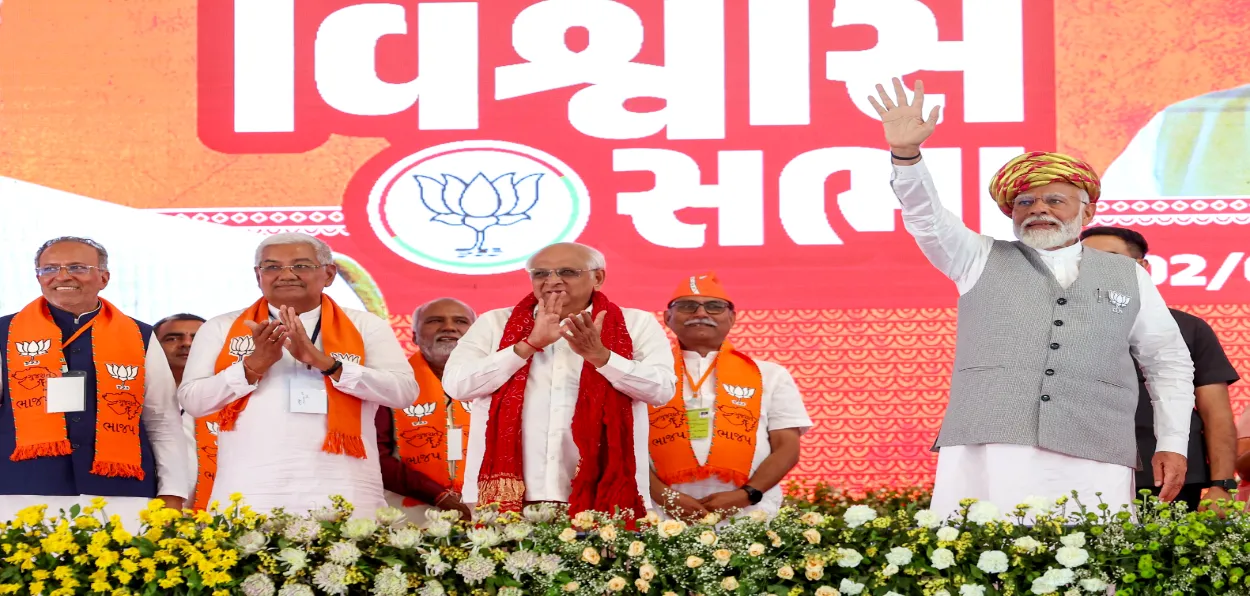
 Sushma Ramachandran
Sushma Ramachandran
Even as the country is buzzing with heightened political activity during the elections, the economy continues to be on the upswing. Latest data on Goods and Service Tax (GST) collections shows these have crossed the Rs. two lakh crore mark in April for the first time. Petrol consumption has also risen by 12.3 percent while LPG sales have risen by a similar 12 percent. The eight core sector industries have recorded over five percent growth while average daily UPI (United Payments Interface) transactions have reached record levels.
It is against this backdrop that one must view the frequent revisions to growth rate projections for India made recently by global financial agencies. The International Monetary Fund pushed up its forecast of growth from 6.5 to 6.8 percent for 2024-25 last week. It even raised the expectation for 2023-24 to 7.8 percent, crossing the government’s assessment of 7.6 percent.
The IMF’s revised forecasts came in the latest Regional Outlook for Asia and the Pacific. It described public investment as the primary growth driver for the economy, given the continuing focus on capex in the current year’s interim budget. A target of Rs. 11.1 lakh crore has been set by the government for 2024-25, a 17 percent increase over the previous year’s revised estimates. In the report, the multilateral institution noted that both India and the Philippines have been the source of “repeated growth surprises supported by resilient domestic demand.”
This alteration in outlook follows the World Bank’s revision of its growth prediction last month from 6.4 to 6.6 percent for the current fiscal. It based the change on the expected robust growth in both services and industry sectors, with the latter being led by strong construction and real estate activity. In its latest bi-annual South Asian Development Update, the Bank noted that the fiscal deficit and government debt are projected to decline in the medium term supported by robust output growth and consolidation efforts by the government.
Global investment agencies like Fitch Ratings, and Goldman Sachs Moody’s have similarly raised their forecasts for growth in the current fiscal over the past two months. Rating agency Fitch, for instance, revised its projection from 6.5 to 7 percent because domestic demand especially investment would be the main driver of growth. It also cited sustained levels of business and consumer confidence.
Goldman Sachs has also hiked its growth estimate for calendar year 2024 to 6.6 percent, a rise of 10 basis points. In a recent report, it said the Indian economy is likely to grow by about 6.7 percent consistently over the next decade. Similarly ratings agency, Moody’s upped its forecast from 6.1 to 6.8 percent for 2024 citing robust manufacturing and infrastructure spending leading to both global and domestic optimism in the country’s economy.
The positive outlook for the current fiscal comes amid geopolitical tensions that could potentially create headwinds for the economy in the coming months. The Israel-Hamas conflict has widened to include Iran and this has raised fears of a widening war. For the time being there seems to be a lull after Iran’s drone attack on Israel and the subsequent retaliatory strike on military installations. Even so, international oil markets have reacted with prices firming up over the past few weeks.
Oil markets are now ruling at around 87 to 89 dollars per barrel of the benchmark Brent crude, significantly higher than about two months ago. In case oil prices continue to harden, it would create difficulties for India which imports over 80 percent of its fuel requirements.
The other development that could impact the growth story in this country is the prospect of any blockage of the sea route for oil supplies from West Asia. There are worries that Iran could block oil and natural gas movement through the Strait of Hormuz, a narrow waterway that connects the Persian Gulf and the Gulf of Oman. It has been described as the world’s most important oil choke point by the U.S. Energy Information Agency. Over 80 percent of the oil shipped from the Persian Gulf region has to move through the Strait as pipeline availability is limited.
For India, which relies on most of its oil and natural gas imports from this region, any disruption in movement through the strait could have dire implications. Though over 30 percent of crude imports are now from Russia, the remainder are from traditional long-term suppliers in West Asia like Saudi Arabia and the United Arab Emirates. These cargoes come via the Strait of Hormuz.
This is in addition to the problem of Yemen-based Houthi rebels attacking merchant shipping in the sea route going towards the Suez Canal from Asia. In case the situation worsens, India will find it hard to move export goods to the lucrative European markets. Trade flows will be impacted when exports are plateauing due to global tensions.
As yet, however, geopolitical developments have not been able to derail the growth momentum in this country. One reason has been the success in containing inflationary pressures on the economy. Despite continuing concern over food prices, retail inflation cooled to 4.85 percent in March slightly lower than 5.09 percent in the previous month. This is despite food inflation remaining at a high of 8.5 percent.
ALSO READ: Hospital for poor is top priority of Pune's 77-year activist Ashraf Mulla
The government assuming power in June will thus be taking over an economy that is recovering rapidly from the ravages of the pandemic years as well as the impact of the Ukraine war. It remains the fastest growing major economy in the world with growth expected to reach seven percent in the current fiscal. At the same time, the new set of economic policymakers will have to take into account the potential threats posed to a smooth growth path by external headwinds in the coming year.
The author is a senior columnist and writes on economy and global politics
